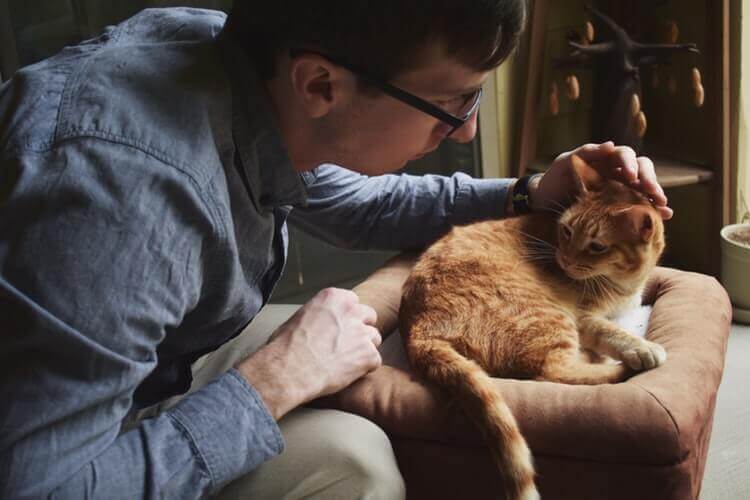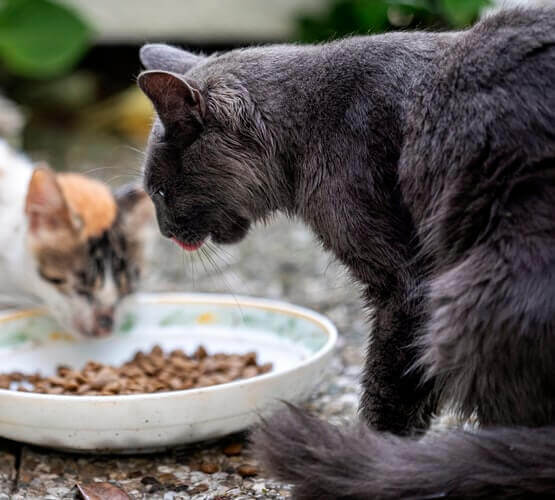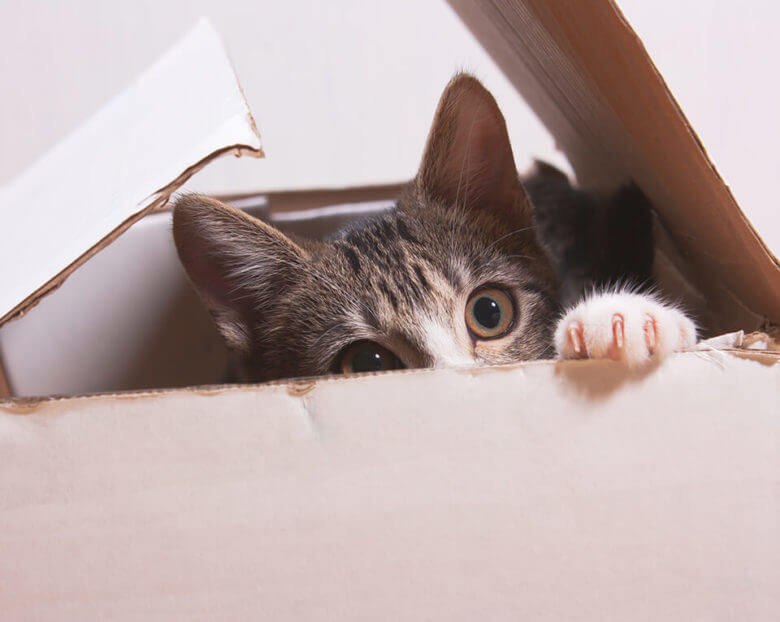

Did you know that cats can pick up on your emotional states? If you are planning to relocate to a home abroad soon, you should arm yourself with patience since moving with cats may be a challenging process. Felines are known as very intelligent and sensitive creatures who prefer a predictable daily routine. Above all, they want to be in control of their environment.
According to a study, your kitten can notice when you’re stressed out or anxious, which can impact its health as a result. That’s why you should keep in mind that every relocation, especially an international one, may become stressful both for your pet and yourself. Read through the tips and tricks below to find out how you can make relocating with your furry friend less stressful.
What Should You Know Before Moving With Cats Overseas
If you are planning to move across national borders, it’s only reasonable that you would like to bring your pets with you. In that case, it would be smart to get international moving services for your belongings and travel by plane with your animal friend. However, checking airline requirements is a must – the criteria vary a lot, from one airline to another.
There are two different ways of transporting your animal companion on a plane:
- Take their crate with you as checked baggage
- Mark them as cargo
Additionally, depending on the type of flight, you need to follow some rules and conditions when traveling with your feline:
- Obtain a suitable container
- Find out what breeds are restricted
- Animals must be calm and healthy
- There are age limits

Find the Right Travel Crate for Cats
If you’re planning on flying somewhere far away, you need to find a safe and comfortable travel crate for your furball. There is a good rule for this – add 4 inches to the height and length of your cat to determine the optimal carrier size.
Health Documents Are a Must
If you are relocating to a foreign country, the procedure is clear – the animal must be healthy and free of parasites or diseases that could infect local animals. In general, there are some documents that you may expect to be required to obtain:
- International health certificate
- Government endorsement of the health certificate
- Import permit
- The rabies vaccine record
- Printed health records
Microchipping and ID Tags
This requirement is not mandatory everywhere, but some countries, like Canada, recommend it. Even beyond that, microchipping is a useful thing to do, even if you’re not traveling abroad. ID tags are also helpful in case unpredictable or unthinkable happens, and your furry friend gets lost or escapes. That can occur even during the flight.

Let WebMD Pet Health Center Be Your Guide Before Relocating
The most crucial step to do before the move is to make consultations with your vet to check your pet’s health condition. The visit is the right time to find out whether your kitty should receive any additional vaccines and if there are any extra vitamins or supplements to take into consideration. If you have any further questions or dilemmas, you can always check the website WebMD and find relevant and up-to-date information and advice.

Check Which Cat Breed Is Not Allowed to Enter Your Chosen Country
One of the things you should know before moving abroad is the fact that some breeds are banned from entering certain countries. In case you have a Persian cat with a flat-face, you should know that air travel can be particularly dangerous for it. The reasons are its nasal passages – they are narrow, and thinner air could cause oxygen deprivation. In case you have to fly, don’t put your feline in the cargo hold.

The Preparation Period – Introduce Your Pet to a Carrier
You should take certain steps as early as possible to prepare your pet for the move. The most important thing to do is to acclimate it to the carrier since it is going to be spending a long time in it. Furthermore, although you will be occupied with boxes and the packing process in general, you shouldn’t neglect your cat’s daily needs.
Keep a Routine
Kitties adore routine. For them, it’s imperative to maintain a steady schedule – meals, time for play, and cuddles should be at times they’re used to. The more relaxed your cat is before the move, the less trouble you will have with it during and after the relocation.
Get Your Cat Comfortable both with Moving Boxes and Its Carrier
When it comes to packing, there is one great thing about it – cats love cardboard boxes. Take out a few boxes a couple of days before you start packing and let your pet explore them. However, your animal companion may become skittish. Take its favorite toys, put it near the boxes, or hide some treats in them. Of course, the unfamiliar smell of packing supplies could be an additional trigger for stress. In that case, spritzing some organic catnip spray on them from time to time will be just enough to relax your kitty and alleviate the anxiety.
Before the move, you should prepare your feline for the carrier. Leave it open and place it in your pet’s favorite room. Put inside its toys, treats, and food bowls. If your cat is terrified of the carrier, you can start by placing the food bowl beside it, and after a few days, go a step further. If your feline doesn’t refuse to eat in the carrier, you can rest assured that you have achieved your goal.

Tips for During the Move
Whatever methods you’ve been using until the big day, you should keep in mind that the relocation day will be stressful for everyone. In spite of that, you can take some steps to help soothe your pet’s anxiety during the move.
Feed a Small Meal
During the move, your pet’s stomach can get upset due to stress. Start a strict diet several days before the trip and cut down on the amount of food – that measure can prevent unpredictable events while traveling, especially if your animal is prone to getting sick in those situations.
Keep Your Cat Safe During the Flight
In addition to reducing meals, there are other measures you should take for your felines’ safety:
- Avoid traveling during extreme temperatures
- Avoid holidays and summertime
- Use direct flights if possible
- Stop feeding your animal companion four to six hours before the trip
- Use tranquilizers only if your vet prescribed them
- Label the crate with your information and the destination address

Tips for Settling Into Your New House
Once you reach your new address, it’s crucial not to rush anything and let your feline take its time in becoming familiar with the new home, as it may find a way to run away otherwise. Instead, pick a dedicated room just for your kitty that will remain quiet. But before doing that, make sure that all the necessities – food, water dishes, litter box, and bed, are situated in it. It’s always a good idea to put toys and cat treats all around the room to encourage your feline to explore the new home.
Do a Deep Clean
Since cats have a strong sense of smell, they can easily pick up all human and animal smells unfamiliar to them. That’s why you should deep clean all the nooks and crannies of your new home to remove all strange smells from furniture and floors.
Slowly Introduce New Rooms or Let Your Cat’s Free Spirit Explore
Depending on your cat’s character, you’ll see what type of behavior new rooms will provoke. Also, a great tip to make your cat feel secure in a new home is to spread its scent throughout the place. Take a soft glove and rub your feline’s cheek and head – that’s how you collect the scent from glands. After that, rub this glove against the walls, furniture, and the corners of doorways. That will help your kitty to become familiar with the unfamiliar territory as soon as possible.

Moving With Your Feline Can Be Fun
If your moving day is approaching and you’re not sure what to do with your animal and how to take care of this challenging process, keep one thing in mind – don’t panic. Your animal can feel even the subtlest differences in your behavior, which can easily make it nervous and unpredictable. Of course, you don’t want that hassle either for you or your furry friend.
If you’ve carefully read our tips and tricks on how to deal with long-distance relocation with a cat efficiently, you shouldn’t worry about a thing. They are highly intelligent animals with a profound understanding of your feelings and thoughts. Give them enough attention and care pre-move, during the move, and after settling into the house, and everything will go without a hitch.






